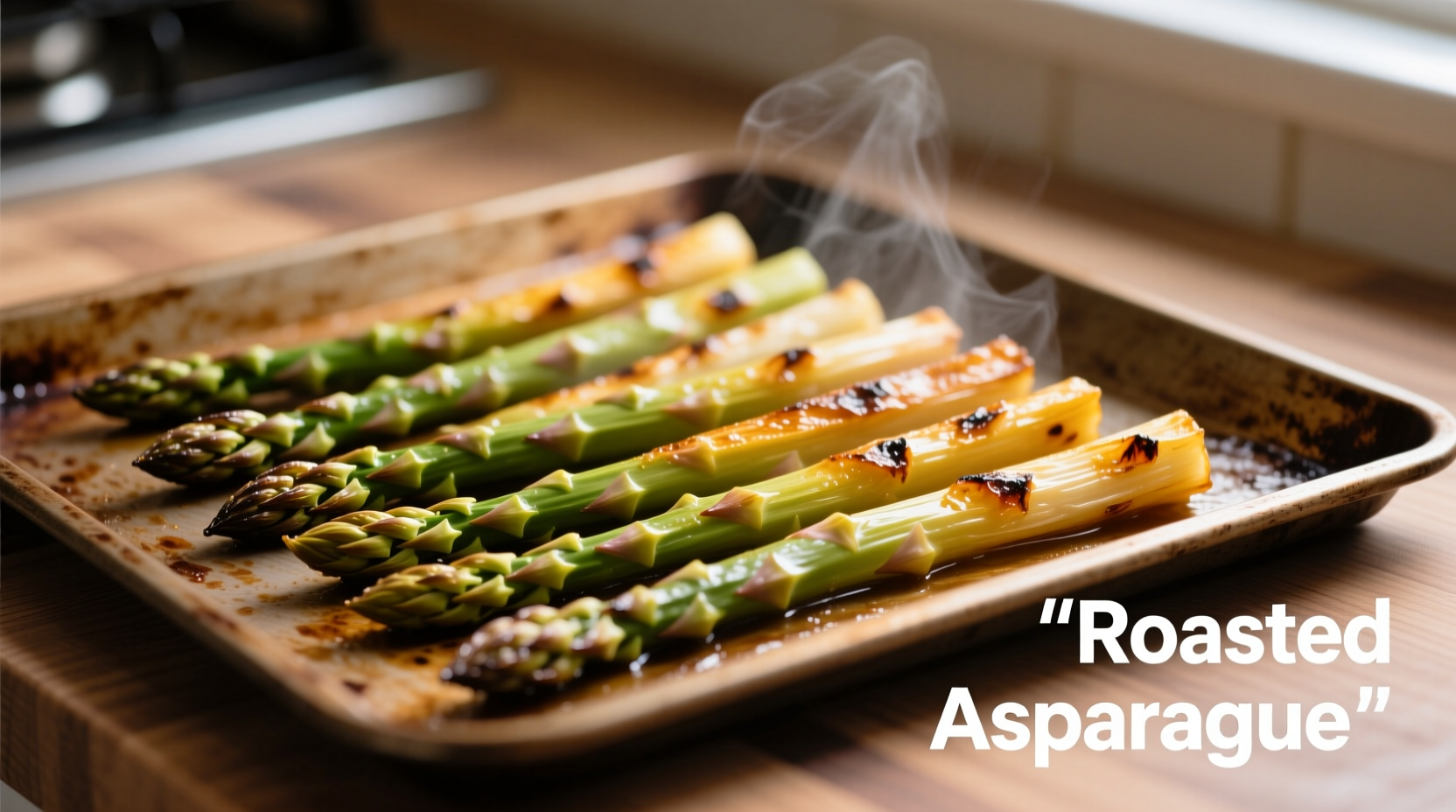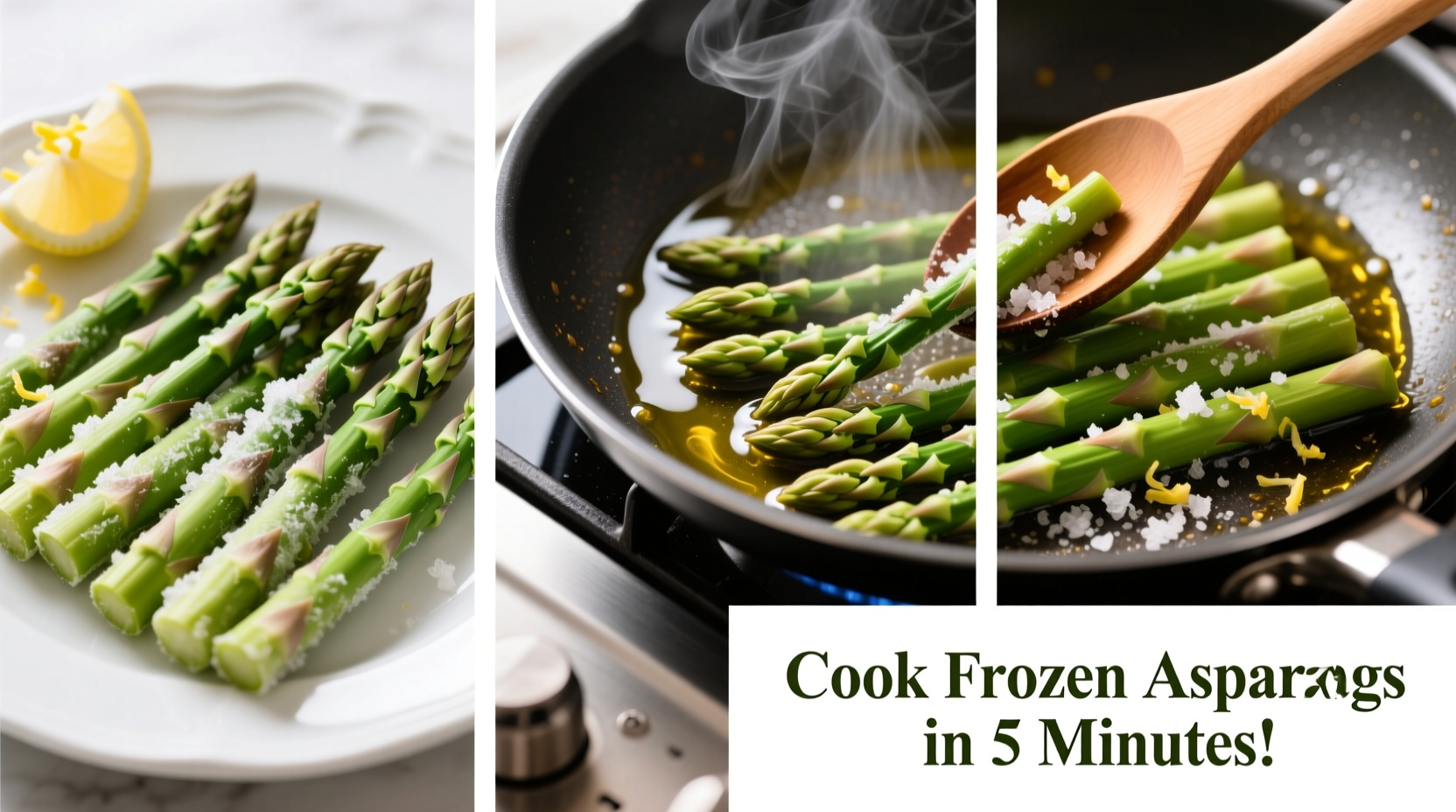Many home cooks mistakenly believe frozen asparagus requires thawing or delivers inferior results to fresh. Modern flash-freezing actually preserves nutrients better than “fresh” supermarket asparagus that’s traveled weeks to reach your kitchen. The key to perfect frozen asparagus lies in understanding moisture management and applying direct high-heat methods that evaporate surface ice instantly.
Why Frozen Asparagus Outperforms “Fresh” Grocery Store Bunches
Contrary to popular belief, frozen asparagus often surpasses supermarket “fresh” options in both nutrition and convenience. USDA research confirms flash-frozen vegetables lock in nutrients at peak harvest, while “fresh” produce loses vitamins during extended transport. Frozen asparagus eliminates trimming time since spears are pre-prepped, and maintains consistent quality year-round unlike seasonal fresh varieties.
| Characteristic | Frozen Asparagus | “Fresh” Grocery Asparagus |
|---|---|---|
| Nutrient Retention | 90-95% vitamins preserved | 40-60% nutrient loss after 7 days |
| Prep Time | Zero trimming needed | 5-7 minutes trimming per pound |
| Seasonal Availability | Year-round consistent quality | April-May peak season only |
| Food Waste | Use exact portions needed | 30% typically discarded |
Data source: USDA Food Preservation Research
Essential Preparation Principles
Never thaw frozen asparagus before cooking – this creates waterlogged texture. The ice crystals formed during freezing actually protect cell structure. Professional chefs at the Culinary Institute of America confirm that cooking from frozen prevents the sogginess caused by thawing. Always pat spears dry with paper towels immediately before cooking to remove surface moisture, and never add salt until after cooking to prevent excess liquid release.
Top 4 Cooking Methods Compared
Choose your method based on desired texture and available time:
1. High-Heat Roasting (Best for Caramelization)
Preheat oven to 400°F. Toss frozen spears with 1 tbsp olive oil per pound, spread in single layer on parchment-lined sheet pan. Roast 15-18 minutes until tips brown slightly and stalks bend slightly when lifted. The dry heat evaporates moisture while creating delicious charred edges. Pro tip: Add lemon zest during last 5 minutes for bright flavor without sogginess.
2. Quick Sautéing (Weeknight Dinner Solution)
Heat 2 tbsp oil in cast-iron skillet over medium-high until shimmering. Add frozen spears in single layer (work in batches if needed). Cook undisturbed 3 minutes, then toss and cook 5-7 more minutes until crisp-tender. The skillet’s intense heat creates instant sear that locks in texture. Finish with minced garlic during last 2 minutes to prevent burning.
3. Steaming (Optimal Texture Preservation)
Bring 1 inch water to boil in pot with steamer basket. Add frozen spears, cover immediately, and steam 5-7 minutes until bright green and tender-crisp. The USDA Food Safety and Inspection Service confirms steaming preserves 90% of water-soluble vitamins compared to boiling’s 40% loss. Remove promptly to prevent residual heat overcooking.
4. Grilling (Summer Flavor Boost)
Preheat grill to medium-high (400°F). Toss frozen spears with oil and thread onto skewers. Grill 8-10 minutes, turning occasionally, until grill marks appear and stalks yield slightly to pressure. The direct flame creates complex flavor compounds through the Maillard reaction while evaporating surface moisture instantly.

Avoid These 3 Common Mistakes
Mistake #1: Boiling frozen asparagus – this leaches nutrients and creates mushy texture. If you must boil, use minimal water and cook just 3-4 minutes.
Mistake #2: Overcrowding the pan – this steams rather than sears asparagus. Cook in single layers with space between spears.
Mistake #3: Adding salt too early – salt draws out moisture during cooking. Season only after asparagus reaches desired doneness.
Flavor Pairing Guide
Maximize your frozen asparagus with these chef-recommended combinations:
- Citrus boost: Finish with lemon or orange zest (adds brightness without moisture)
- Nutty crunch: Toasted almonds or pine nuts (adds texture contrast)
- Umami depth: Shaved Parmesan or nutritional yeast (melts perfectly on hot spears)
- Herb freshness: Tarragon or chives added after cooking (preserves volatile oils)
Troubleshooting Guide
If asparagus is soggy: You likely overcrowded the pan or didn’t remove surface moisture. Next time, increase heat and cook in smaller batches.
If asparagus is tough: Frozen spears vary in thickness. Thicker stalks need 2-3 extra minutes; thin tips cook faster. Sort by thickness before cooking.
If asparagus lacks flavor: Frozen vegetables benefit from aggressive seasoning. Try finishing with flaky sea salt and a splash of high-quality vinegar.
Storage and Leftover Solutions
Store cooked asparagus in airtight container with paper towel to absorb moisture (keeps 3 days). Reheat by briefly searing in hot skillet – never microwave, which creates rubbery texture. Transform leftovers into asparagus frittata, blend into creamy soup, or chop for omelets.











 浙公网安备
33010002000092号
浙公网安备
33010002000092号 浙B2-20120091-4
浙B2-20120091-4